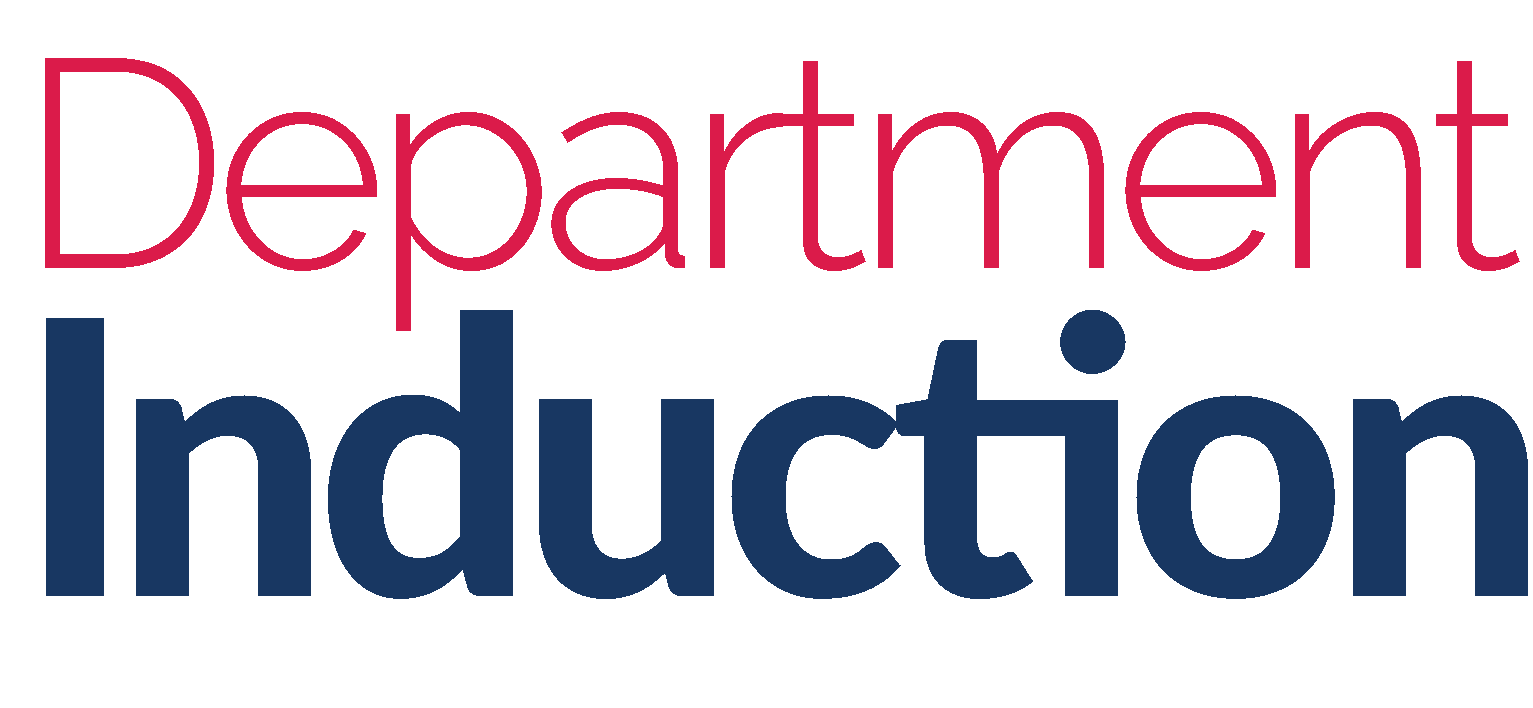
Medicine on calls induction booklet was contributed by the following;
written by Dr Sophie Winter
Reviewed by Dr Gregory Knowles
Updated by Dr Sidrah Ali Khan
Select the booklet titles below to expand the table to view more information.
Medicine on Calls Terms
Clerking
Taking a history from the patient in combination with test results and investigations to come up with a list of differential diagnoses, likely diagnosis and management plan. There are no physical clerking booklets any more, only medical admission document only on Sunrise.
Always consider:
- DNAR/respect forms
- Reg meds
- VTE documentation & prescribing
- post take with consultant
- basic initial investigations – put out bloods for the next day
You also MUST prescribe all of their regular medications using the medicine reconciliation tool on Sunrise. Check these medications with the patient ideally, otherwise you can use SCR, DB Use your GP Smartcard, if you don’t have one apply for one via SARC on the hub to help with reg meds .
Ward Cover
Out-of-hours the on-call team provides cover for the medical wards. Jobs will be sent to you via the NerveCentre device, or you may be bleeped. These tasks include things like prescriptions, clinical assessments and reviewing images/results.
Post take:
After you have clerked a patient, and decided on differentials and a management plan you will then ‘post take’ with a consultant. There will be a few medical consultants walking around ED and AMU waiting to be grabbed or asking if there’s anyone to post take.
Discuss your history, examination findings and plan with the consultant. They will then review the patient with you (this is an excellent learning opportunity as you may see things you missed!). After this they will make the final diagnosis and management plan. It is your responsibility to then follow this plan, or handover to another doctor if you will finish your shift before tasks are completed.
Handovers
On AMU there is a jobs doctor between 15:30-23:30 who you can verbally handover tasks to if you are finishing. On ED you can handover to any of the twilight doctors who will be staying later than you. For the rest of the hospital, handovers and ‘job chasing’ are often done through NerveCentre. Handover is at 09:00 and 21:00. This is usually in A2. You will carry MET bleep, at handover MET call tasks will be allocated.
AMU Unit
AMU is based in the east block of the hospital. You may need to walk between ED and AMU a few times during your shift. This has the same layout as the rest of the hospital wards with stations, bays of 4 beds and side rooms.
NerveCentre
This is a system designed to allow nurses/other medical teams to put jobs and alerts onto an iPod that you will be carrying around. Basically, a digital bleep. Collect it from the site co-ordinator’s office and they will show you how to use it. You can also put jobs on the Nerve by finding the link on the Hub. It’s very self-explanatory. If you have bleep and Nerve, politely ask nurses to put tasks on NerveCentre. Prioritise red flag tasks. When tasks are done make sure to contact the ward it originates from to ensure it is communicated and actioned.
Emergency Department

ED is located in the west block of the hospital. You will mostly be based in the doctor’s office. To find this (view map below), follow the signs to ED x-ray along the main corridor, once you enter this area the main ED department is on the right and the doctor’s office is at the far end of this. It’s a little alcove which will be recognisable as the medical doctor’s office by the multitude of people sat furiously scribbling on clerking booklets by the computers.
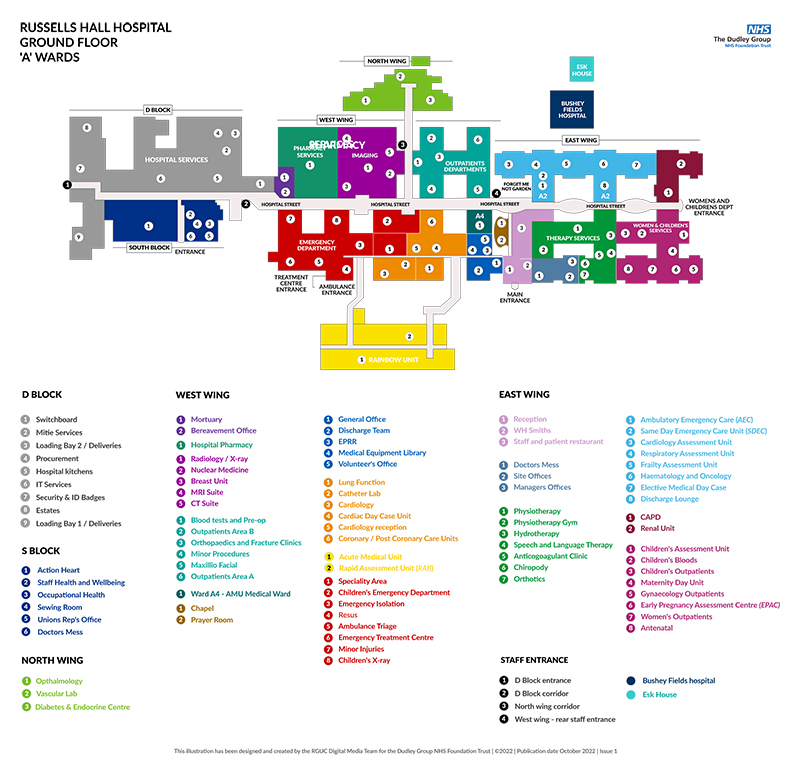
Medicine on Call Rotas
Rotas
The medicine on-call rota is available on Medirota. Log in and you will be able to see the General Internal Medical (GIM) rota – it will show you which dates and type of shift you are on-call, as well as who you will be on-call with! Also shows you your off days pre- and post-on-call.
For the 2021 cohort, on-calls
All week (Day)
- 09:00-17:00 Medicine clerking with 17:00-21:30 Medical ward cover
- Part of the medical emergency team (MET team) – carries the 6010 bleep
- 08:00-20:30 Surgery on-call
- 14:00-00:00 Medicine clerking twilights (F1s only do 9-5 clerking shifts, no twilights)
- Clerking in ED the whole shift
All week (Night)
- 21:00-09:00 Medical ward cover
- Part of the MET team – grab the 6010 bleep off the day FY1 and any outstanding tasks. You run around doing NerveCentre tasks and answering bleeps all night
- 20:00-08:30 Surgery on-call
Weekend Cover
- 09:00-17:00 Single-ward medical cover One junior per medical ward, working with the consultant. Just like a normal weekday, do the ward round then do the jobs. Handover any urgent outstanding tasks on NerveCentre
- 08:00-20:00 B3 (Urology and vascular ward cover)
- 08:00-20:00 Surgery elective ward round
- There are 4 surgical F1s at the weekend:
- Two surgical on calls
- One twilight
- One B4 elective cover
(NB please see the surgery booklet for information regarding surgical on-calls)
Medical Ward Cover
- Clerking FY1 9:00-17:00, after this another F1 (with speciality long day) will cover wards from 17:00-21:30.
- Surgical FY1s with speciality long day on the weekend will cover a medical ward 9:00-17:00 and then 17:00-21:00 wards.
- Surgical F1s with speciality long days during weekdays will be expected to cover their own surgical wards till 5pm and then 5-9pm general medical wards.
- Also note that surgical F1s are usually 08:00–20:00 if speciality long days (no more than 12 hours from when they started).
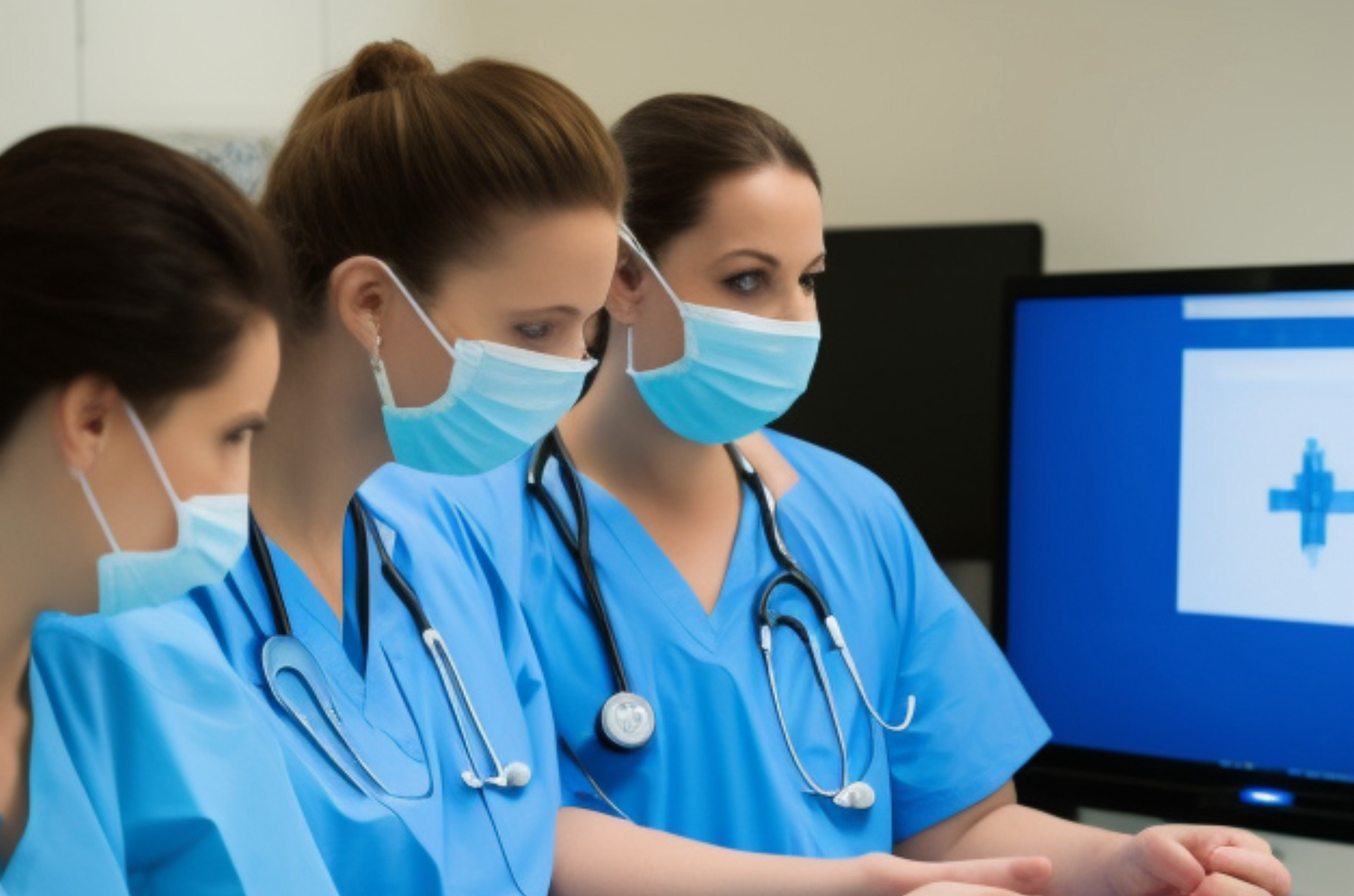
- Collect your NerveCentre from the site office, found on the corridor next to WHSmith, right next to the doctor’s mess. Over the weekend, you are expected to collect it in the morning but jobs will only be allocated on nerve centre after 17:00.
- Respond to your tasks
- Remember to prioritise
- You have a ward-based SHO and registrar who are available to help you and for advice
- There is a junior doctor per ward at weekends. They will cover their designated ward from 09:00-17:00 and receive NerveCentre tasks for that specific ward. At 17:00, the FY1 doing 09:00-21:30 will then cover all the medical wards and will get NerveCentres/bleeps from every medical ward
- Remember to bring food and take breaks! If you’re doing the 09:00-21:30 shift, use the clerking time to take your breaks – it’s usually a lot more chilled than your 17:00-21:00 cover of all the medical wards.
MET Team

- Throughout your ward cover on-calls you will be holding a bleep as part of the MET team
- You will be fast-bleeped to MET calls. This means switch board can send out a voice message with the location of an emergency. They will tell you whether it is a medical emergency or a cardiac arrest.
- You should stop the task you are doing and quickly make your way to the location of the emergency.
- Also in attendance will be an SHO, medical registrar, anaesthetist, and critical care nurse
- Depending on the type of emergency, your role may be taking bloods, performing ABG’s, reviewing patient notes or performing CPR. Be prepared for anything.
- As an FY1 your job will be documentation. On Sunrise, open ‘senior clinician review’. Start documenting:
- DNAR/escalation/resus status
- DPP & reason for MET call
- team in attendance
- A-E assessment
- immediate plan (including resuscitation details if administered in arrest)
- handover details with base ward team and updating family
Handovers
Morning handover (09.00-09.30)
- Held on A2. You will most likely see many other doctors heading this way
- Handover is led by the on-call medicine consultant
- Discussion from the night team as to any patients they have clerked who need post taking, and any unwell patients for the day team to be aware of
- The night and the day team are required to attend to identify any unknown gaps in the rota that need filling in
- Pick up your bleep if you’re on the MET team!
Night handover (21:00-21:30)
- Back to the room where the morning handover took place
- Handover any outstanding tasks on your NerveCentre to the night FY1 and any other outstanding tasks from your day shift
- There will be a discussion over any sick patients and MET calls for the night team to be aware of. Use the sign in/out sheet.
Medicine on Calls Clerking
Patient Clerking
There is a doctor’s office in the emergency. There may be a consultant around waiting for people to ‘post take’ with. Introduce yourself and say hello.
You will be based in AMU assessment, with your patients falling under specialty medicine referrals.
You will be required to log into Sunrise and access the list of patients who have been seen by doctors in the ED and are awaiting a medical review (that’s you!). For patients in ED or AMU, the referral to medicine is on Sunrise, under ‘ED patient list’ and on ‘ED specialty referrals- medicine’. When you first start just ask the other doctors to show you how to do this until you are confident with it.
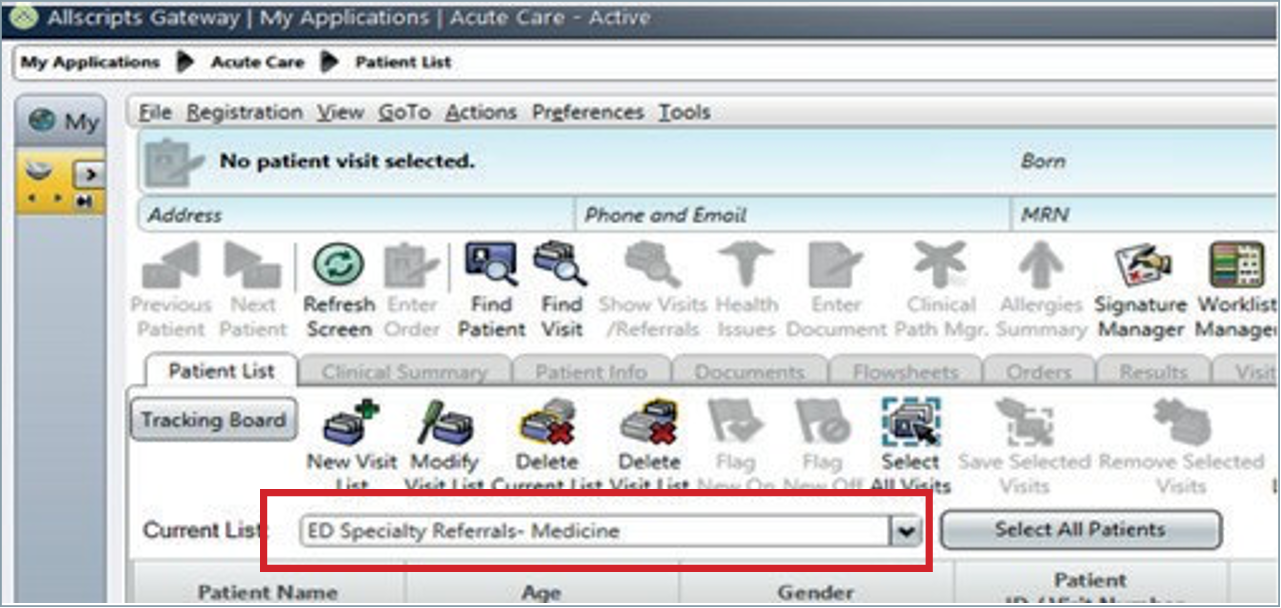
After you’ve found a patient to clerk, put your name against them! It is your responsibility to mark on Sunrise that the patient is being seen. This stops someone else also picking them up and wasting their Access is via ‘documents’, click ‘create a new document’ then type ‘specialty review’. After selecting ‘acute medicine’ as the department, you should put your name and bleep and click ‘clerking’. Again when you first start ask one of the Doctors to show you how.
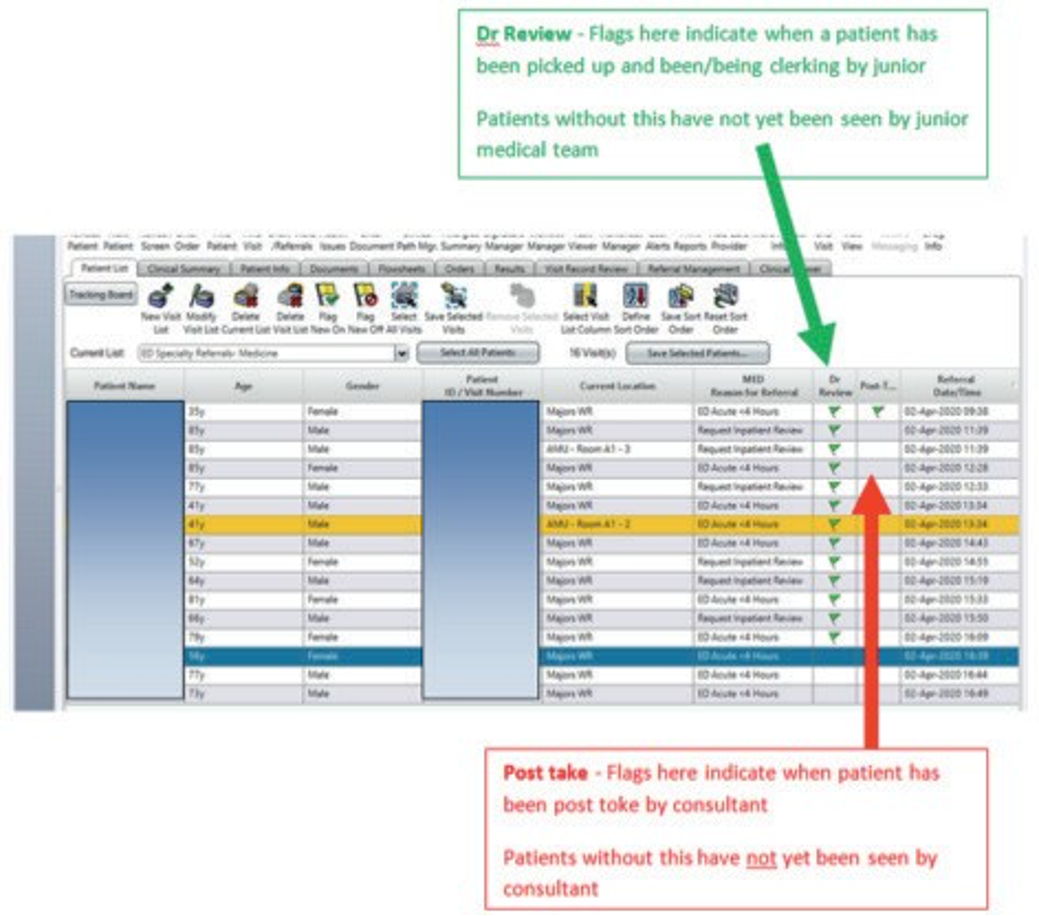
You can see the previous review of the patient from the Emergency Medicine doctor through Sunrise, including presenting complaint, a bit of history and any investigations they’ve already had. By the time you see a patient they should already have had bloods sent by the ED staff, so you can review these too.
Clerking booklets are now available on Sunrise. Complete the information you have available to you before seeing the patient. You can see the ambulance sheet (if applicable) for their presenting complaint, and also view the ED doctors review as above. Recent patient observations and trends can also be accessed via Sunrise (you will have training on this).
In ED they have a filing cabinet organised by cubicle number where they keep ECGs that have already been done, venous blood gas strips and other pieces of paperwork. It is a good idea to go and check in your patient’s slot so you know what has already been done in terms of management.
After you have prepared your paperwork, see the patient! Go through your clerking systematically, using the booklet as a guide if you’re stuck.
Post take
Once you’ve assessed the patient, fill in your differential diagnoses and management plan. Try to do this before asking the consultant to post-take with you. It’s better for your learning and progression to think about these things rather than blindly following seniors. You can then have a proper discussion with the consultant, and work through your differential and management plan with them.
When post-taking with a consultant you should present a brief history of what the patient came in with, their background and your assessment. You can then expect them to see the patient themselves with you.
After the consultant assessment, they will give you the likely diagnosis/differentials and finalise a management plan. This will be automatically marked on the list.
Other tasks
You can now carry out the jobs in the management plan. This may be quick tasks like prescribing antibiotics, or ordering imaging that will then need chasing. If you have jobs that you have not completed before finishing your shift, make sure you hand them over so they are done. Keep a paper list of patients you’ve seen and a list of jobs so you remember to chase things like blood results, scans etc!
When you’re ready, it’s time to pick up the next patient to clerk and the cycle starts again! Don’t start on a new patient after 16:00 (if you are finishing at 17:00). If you are free/spare at end of shift, help others clerking with their jobs. As an FY1 you are not expected to clerk huge numbers of patients – 2 to 4 a day is fine, be comfortable in your practice.
Moving between wards
Sometimes your patient will be moved to AMU mid-clerking which is annoying – you will have to move between AMU and ED a lot during your shift. The consultant will also move between AMU and ED a lot though – if you can’t find them for post-take wherever you are, they are always happy for you to give them a call through switchboard and they will meet you if free!
Tips when Clerking
When looking for a patient’s past medical history, it can be useful to look through old documents on Sunrise such as past discharge letters and clinic letters. These often give a good summary of their background and what medications a patient is on. Always make sure you double check the information with the patient though! Medications may have changed since that letter, and important past medical history may have been missed.
Go at your own pace. Don’t try to rush through or clerk lots of patients at once as you might miss things or make mistakes. No-one is expecting you to be the master of clerking. Please update clerking/sunrise/post take pictures to be relevant.
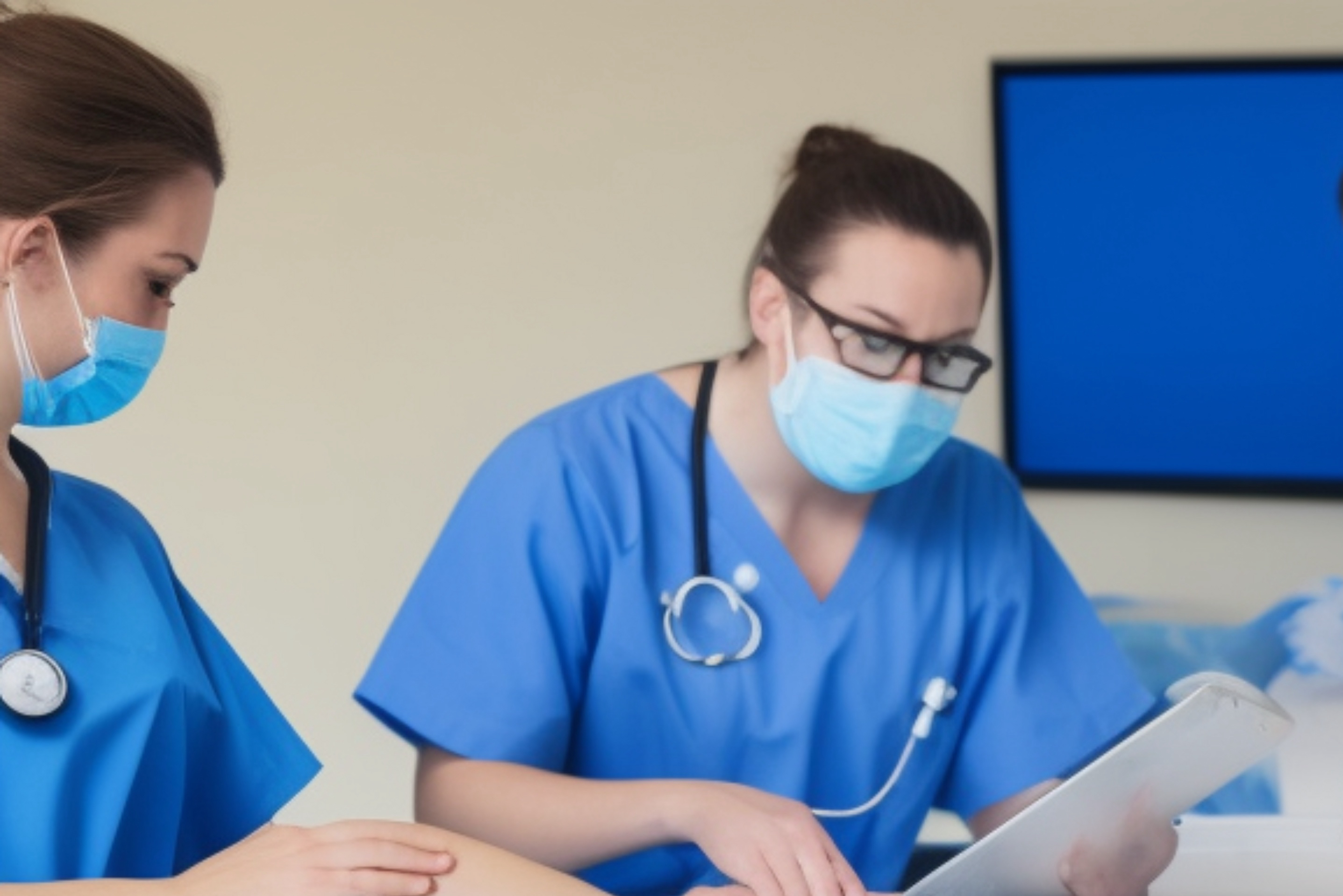
Health and Wellbeing
Staff that are happy and thriving in their working environment will inevitably have a more enjoyable experience in the workplace, contributing to the provision of excellent health care for all of our patients. The Dudley Group recognises our commitment to staff wellbeing in a variety of ways.
Select the link below to find out more how the Trust can support you.

